Unveiled: Science Secrets So Bizarre, They’ll Make You Question Reality

The story of Margaret Hamilton, the mastermind behind Apollo 11’s code, is extraordinary. She meticulously hand-wrote the instructions that would lead humankind to step onto the lunar surface, a feat that still captures our imagination. This remarkable achievement is a testament to how science, often perceived as unfathomable, transforms the unbelievable into reality. From the depths of black holes to the mysteries of parallel universes, our understanding of the cosmos constantly challenges our perceptions.
In its relentless pursuit, science has blurred the lines between fiction and reality. It’s not just about theories and equations; it’s about existence. This exploration will delve into astonishing facts about our solar system, galaxy, and universe. These are not just facts; they are windows into the marvels of the cosmos, stories you likely haven’t encountered before.
Bigger Than Huge
Picture this: if we line up all eight solar system planets side-by-side, they would measure approximately 380,000 miles in total. This might sound immense, but when compared to the sun’s vast circumference of about 2.7 million miles, it’s surprisingly modest.
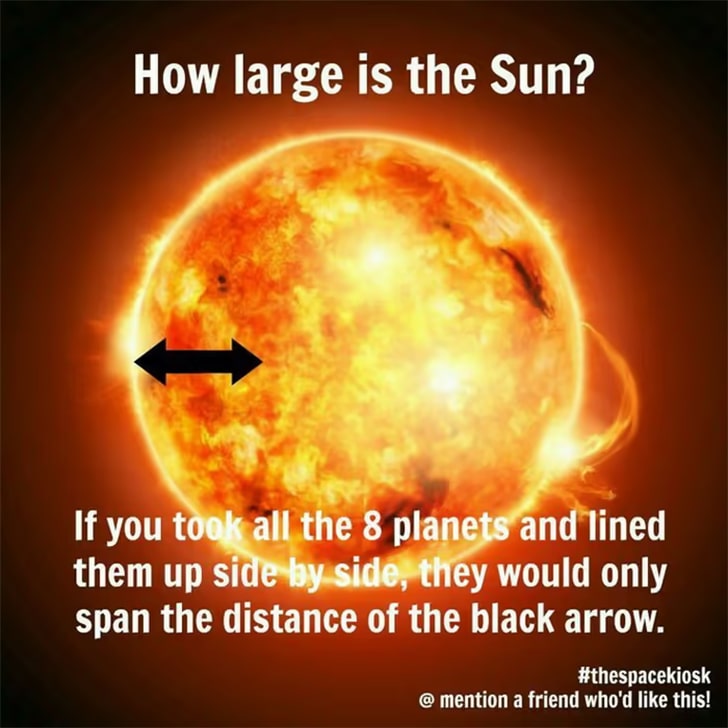
Imagine a line stretching longer than the distance from the Earth to the Moon! This juxtaposition highlights the sheer enormity of our sun, a giant star whose size makes our planetary neighborhood seem like mere dots in an immense cosmic landscape.
Man Leaves His “Mark” On The Moon
Astronauts are educated and experienced, so you might not imagine they have left 96 bags of human waste on the moon from six Apollo missions. This is more than just littering; each ounce of weight was critical, and transporting human waste back would have wasted fuel.
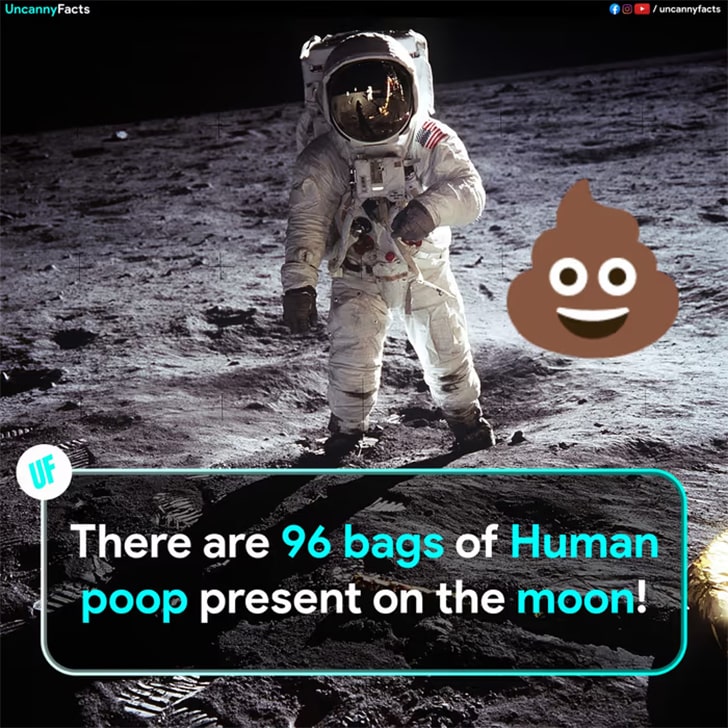
These “defecation collection devices,” as they were formally called, now sit in the lunar dust, a bizarre testament to human presence. This waste could serve as a time capsule for scientists studying the microbes that hitchhiked to the moon!
Endless Supply Of Air And Water? Think Again
Earth’s surface is a mosaic of elements, with water covering roughly 332.5 million cubic miles. This liquid bounty, however, only accounts for a tiny 0.02% of Earth’s total volume. Air, our invisible guardian, forms an atmospheric blanket and represents 30% more of the Earth’s volume than water.
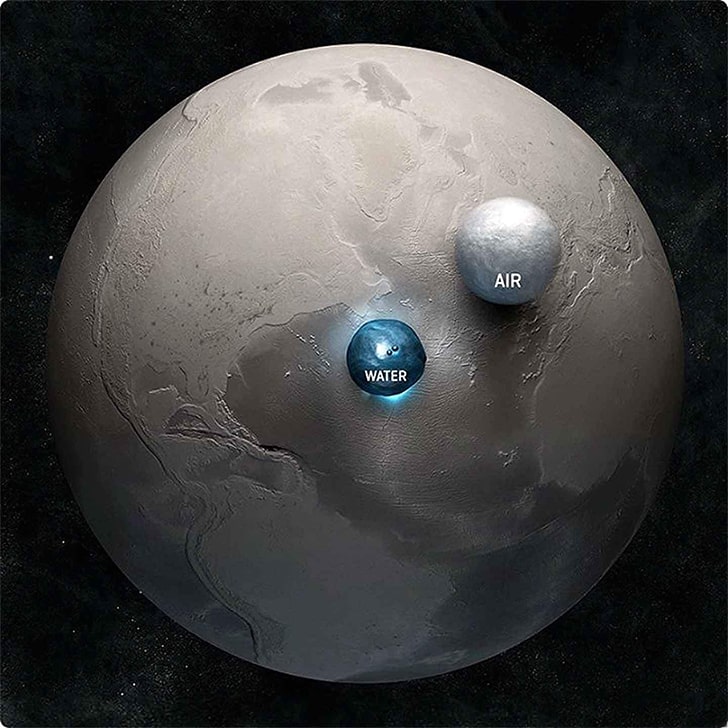
Gazing out at the Great Lakes or the vast skies, you can find it hard to fathom that these immense expanses of water and air are just thin layers on our planet’s surface. Despite their abundance, they’re finite resources, essential for life and delicate in balance.
The Milky Vastness
Embarking on cosmic travel at nearly the speed of light, 670 million miles per hour, you’d still spend 100,000 years traversing the Milky Way. Our home galaxy is a sprawling star city, vast beyond simple comprehension. With a diameter between 150,000 to 200,000 light-years, it’s packed with around 100 billion stars, each potentially orbited by planets of their own.
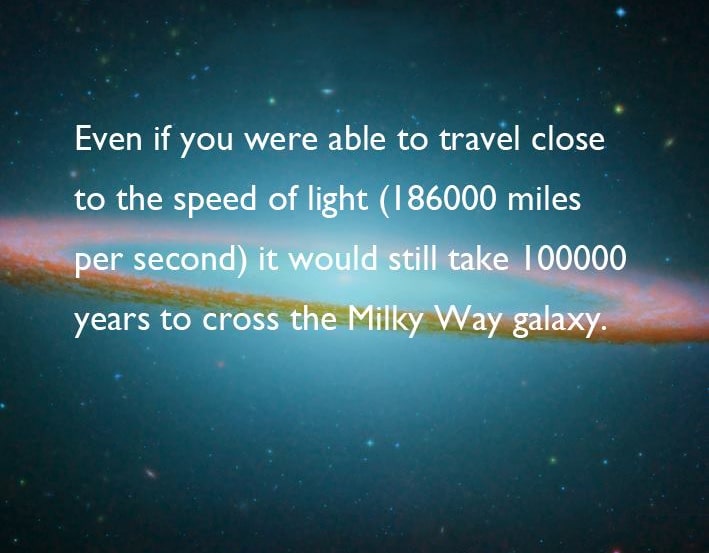
Crossing it is a testament to the immense scale of our galaxy, and despite our spacecraft’s prowess, this immense scale renders our swiftest velocities almost useless! It’s a humbling reflection of the Milky Way’s grand expanse.
That’s A Lot Of Ink
Margaret Hamilton’s contribution to space exploration is monumental, quite literally. Here’s an iconic photograph of the computer scientist, dwarfed by a towering stack of books—the code she hand-wrote for the Apollo missions. This code flawlessly navigated Apollo 11, carrying humanity to the lunar surface.

The stack, as tall as she, symbolizes the immense human endeavor behind the first moon landing. Her work harkens back to when programming was manual, painstaking, and highly critical. Hamilton’s legacy is not just in those pages but in the dusty footprints on the moon.
Living Among The Stars, Someday
The Bishop Ring is a mind-blowing space habitat concept by Forrest Bishop, designed to mimic Earth’s living conditions. Picture a gigantic ring spinning in space, about 600 miles in diameter—that’s like stacking over 100 Mount Everests on top of each other!
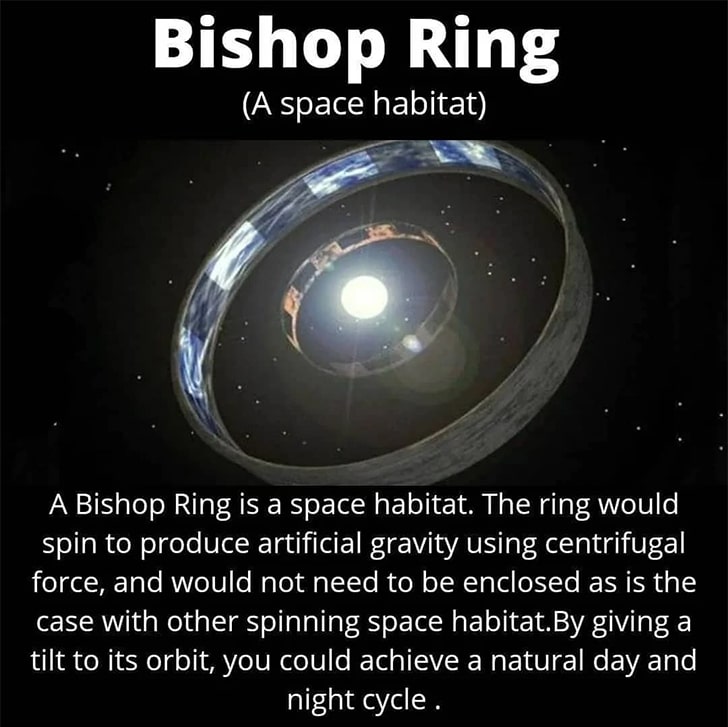
This ring would create gravity by spinning, allowing people to live on the inner surface just like on Earth. It’s a futuristic idea that could house tens of millions of folks among the stars, complete with artificial skies and landscapes. While it’s not built yet, the idea shows what the dreams of living in space could look like.
Falling From Space
Vladimir Komarov was a Russian cosmonaut who met a tragic fate in space history. He was aboard Soyuz 1 in 1967 when it crashed back to Earth after orbiting the planet. Vladimir knew the risks; the spacecraft had many problems, but he went ahead with the mission to spare a friend who would have gone in his place.
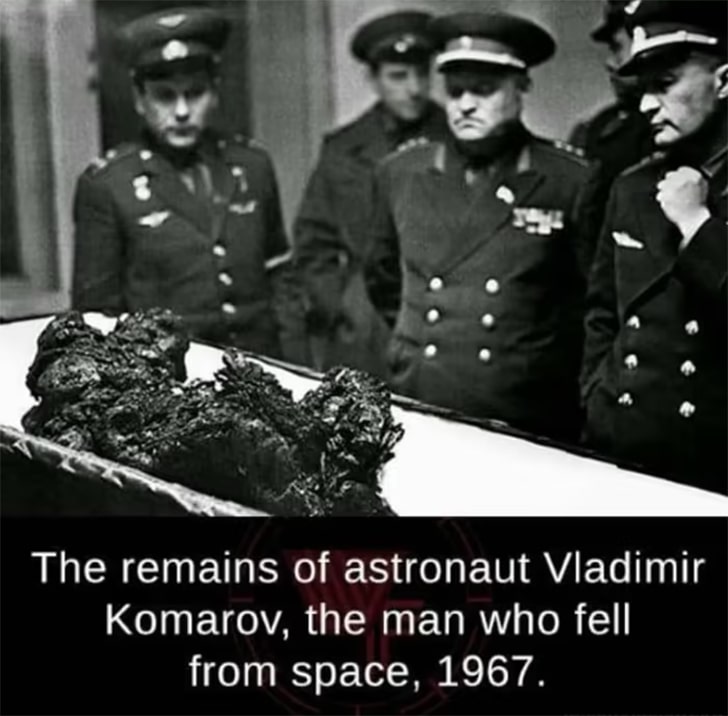
His bravery is remembered because he stayed calm to the very end, even as he plunged back to Earth. His mission showed the dangers of space travel but also the courage of those who dare venture up there.
A Neverending Journey
If a bullet was fired into the vastness of space, it would zip through the cosmos indefinitely at about 1,700 miles per hour. But here’s the twist: space itself is stretching out, expanding faster than that bullet can fly.

This means the bullet would never “catch up” to the edges of the universe or hit a “wall.” It would just keep going and going, like an eternal road trip through the stars. It’s a journey without end because out there, in the grand, growing universe, there are no limits, just endless space.
Then Vs. Now
The Pillars of Creation, towering columns of cosmic dust and gas, were famously captured by the Hubble Telescope in 1995 and, more recently, by the Webb Telescope. While Hubble’s photo was stunning, Webb’s is clearer, showing stars Hubble couldn’t see.
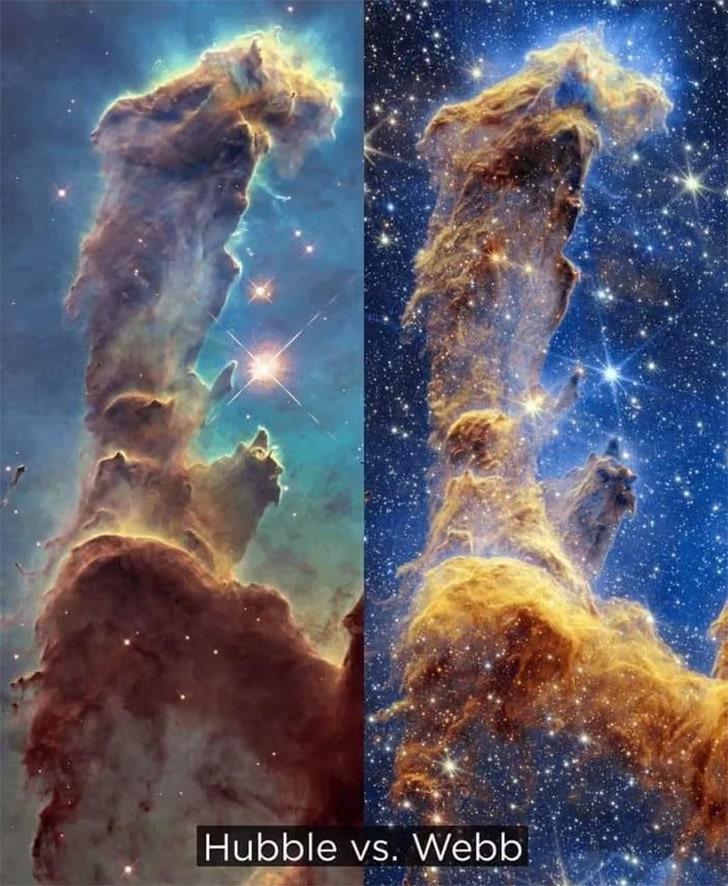
The difference? Hubble, launched in 1990, orbits about 340 miles above Earth and sees visible and ultraviolet light. Webb, launched in 2021, floats about a million miles away and views in infrared, detecting the heat of objects and cutting through dust. It’s like having a superpower to see the hidden secrets of space.
Mayday, Mayday…UFO Spotted!
In April 2010, astronomers were puzzled by an odd radio signal from the galaxy M82. It seemed like an object there was moving four times the speed of light—a real head-scratcher since that’s supposed to be impossible! This mystery object was also sending radio signals nobody had ever detected.

This left scientists scratching their heads, wondering if they had stumbled upon a new cosmic phenomenon. Was it a strange new star? Something even weirder? It’s like a space detective story that keeps us guessing and reminds us how much we still have to learn about space.
Proof Of Water On Mars
Someone said they found water on Mars, and the world stood still, but they just put a glass of water on top of a Mars candy bar—talk about a ‘wet’ joke! But the search for H1O on the Red Planet is no laughing matter in the real universe.

Scientists have discovered signs of ancient rivers and lakes. There’s even seasonal water flow in some places, and ice caps at the poles. So, while you won’t find oceans or springs like on Earth, Mars does have frozen water, just waiting for future explorers.
Can You Escape This Velocity?
Imagine trying to leave Earth for good—you’d need to go super-fast, specifically at 25,000 miles per hour, to break free from its grip without worrying about air slowing you down. That’s Earth’s escape velocity. Now, think of the sun; it’s a whole different ball game. You’d have to go a blistering 1.4 million miles per hour to escape!
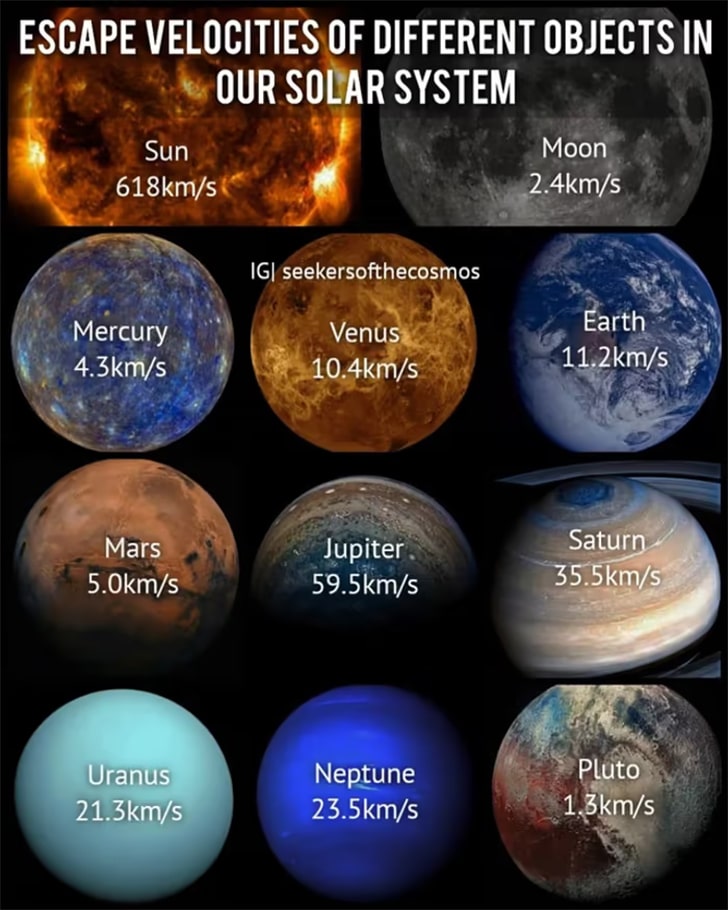
But here’s the catch: the sun’s so scorching that not even light speed is fast enough to zip away. And black holes? They’re the ultimate traps. Even light can’t sprint fast enough to escape their powerful pull, forever swallowed in their mysterious depths.
Everything Is Connected
Think of the universe like a row of lined-up dominos. When one discovery is made, it’s like knocking over the first domino, and then more discoveries keep tumbling after. It’s pretty wild how things way out in space can look or act the same.

When we see pictures of space stuff looking similar, it could be just by chance, or maybe it’s a clue that everything up there follows the same sort of patterns—like some things spinning around and others making waves. It’s all part of the big space dance!
Pluto’s Heart Has Frozen Over
Pluto, the distant icy world, has a heart-shaped feature named Tombaugh Regio that’s captured our imaginations. It’s not a sea of water, but a vast plain of frozen nitrogen and carbon monoxide ice, which would harm us Earthlings.
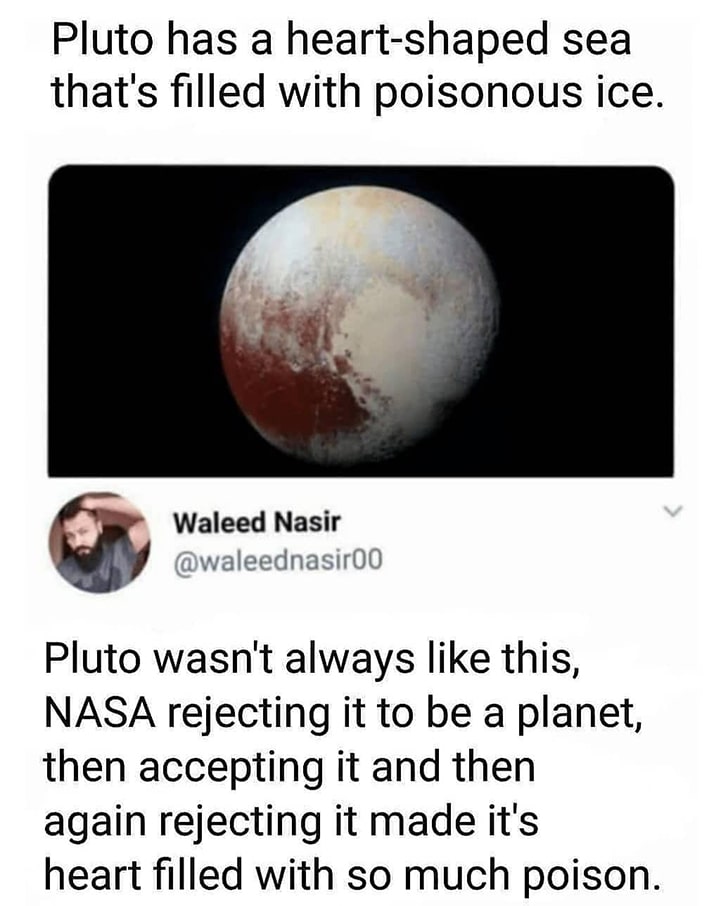
Now, with the ongoing debate about Pluto’s planetary status, this heart might symbolize a warm welcome back into the planet club for some. Although it won’t literally thaw—it’s way too chilly for that—this heart of ice reminds us of the mysteries and playful nature of the cosmos, where there’s warmth in discovery even on the frigid outskirts.
AstroRat
Long before humans ventured into the stars, animals led the way. In 1960, Sputnik 5 became a Noah’s Ark of the cosmos, carrying dogs, a rabbit, 42 brave mice, two rats, and fruit flies on a space odyssey. It was a historic round trip, as all these spacefarers made it back to Earth alive.

The very next year, France saluted Hector the rat, who also survived a solo space trip. His success was a green light for more rat-tronauts. Scientists chose animals to learn how space might affect living beings, paving the path for human space travel.
The Galaxy Next Door
The Andromeda Galaxy is our cosmic next-door neighbor, a swirling city of stars about 2.5 million light-years away. It’s fascinating because it’s on a collision course with our own Milky Way, set for an epic cosmic merger in about 4 billion years.
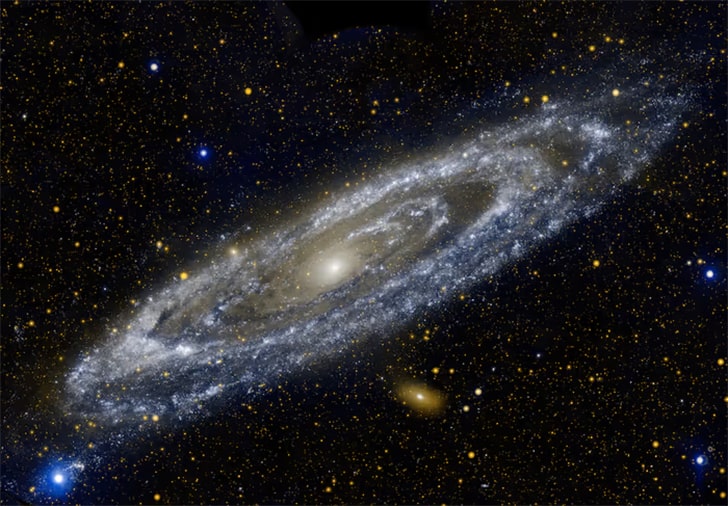
Andromeda is the largest galaxy in our local cluster and the only one visible to the eye from Earth’s Northern Hemisphere. With nearly one trillion stars, it’s massive, and this is why it has such an astronomical allure!
Only Getting Better With Age
The earliest photo of Jupiter dates back to 1879, taken through a telescope with long exposure on a glass plate—just a blurry hint of the giant’s grandeur. Over the decades, technology has zoomed in, turning Jupiter from a fuzzy sphere into a vibrant world of swirling reds and blues.
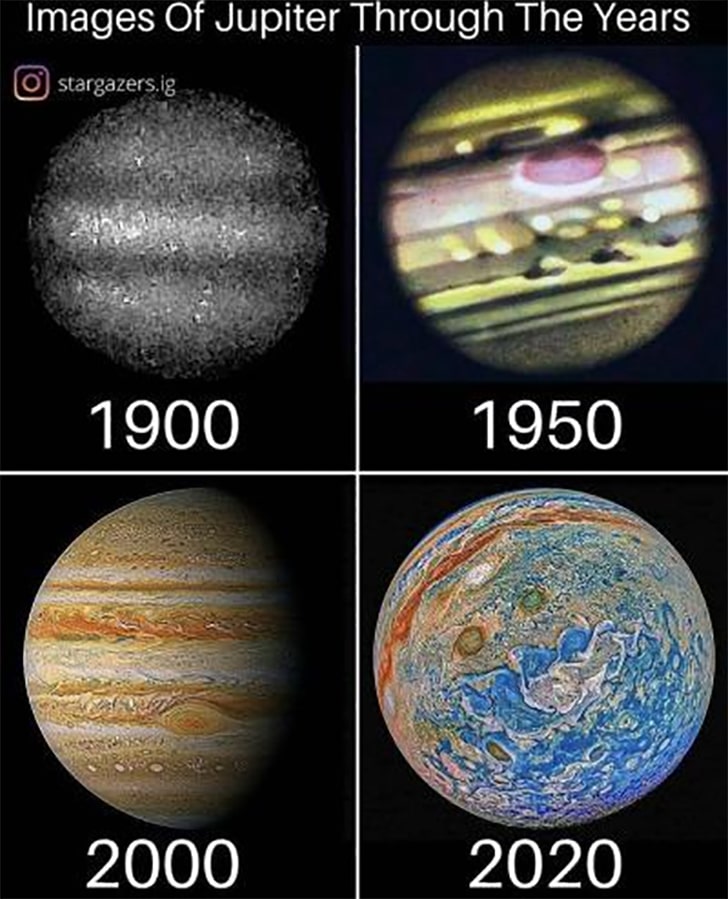
The advent of spacecrafts like Voyager and Juno provided humanity with crystal-clear snapshots, revealing Jupiter’s raging storms with astonishing detail. Every new image shows us a dynamic planet beckoning us to look closer and wonder more.
Sun-Spotting
Coronal holes are the black spots on the Sun’s surface, striking features that mark where the solar atmosphere is cooler and less dense. These patches stand out against the otherwise fiery surface, almost like blemishes on a glowing face.
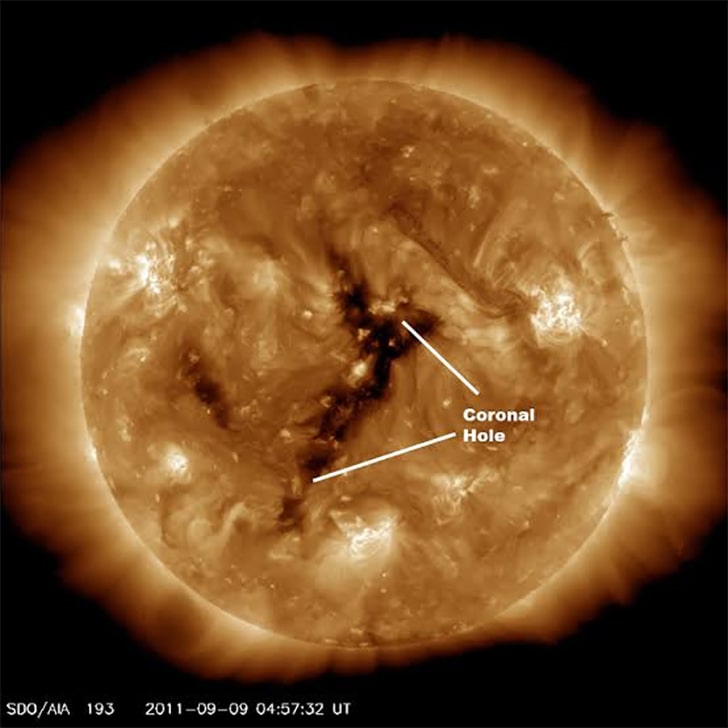
They occur because the Sun’s magnetic field opens up there, allowing solar material to escape at high speed into space. This can lead to solar winds that might spark spectacular auroras on Earth or, sometimes, disrupt our planet’s communications. Coronal holes remind us that our Sun, while life-giving, is also a dynamic, moody, and tumultuous star.
What Galileo Sees, Galileo Draws
In 1609, Galileo Galilei pointed his homemade telescope toward the night sky, transforming our view of the Moon forever. His detailed drawings revealed a rugged landscape of mountains and craters, challenging the belief that the Moon was a smooth, perfect sphere.
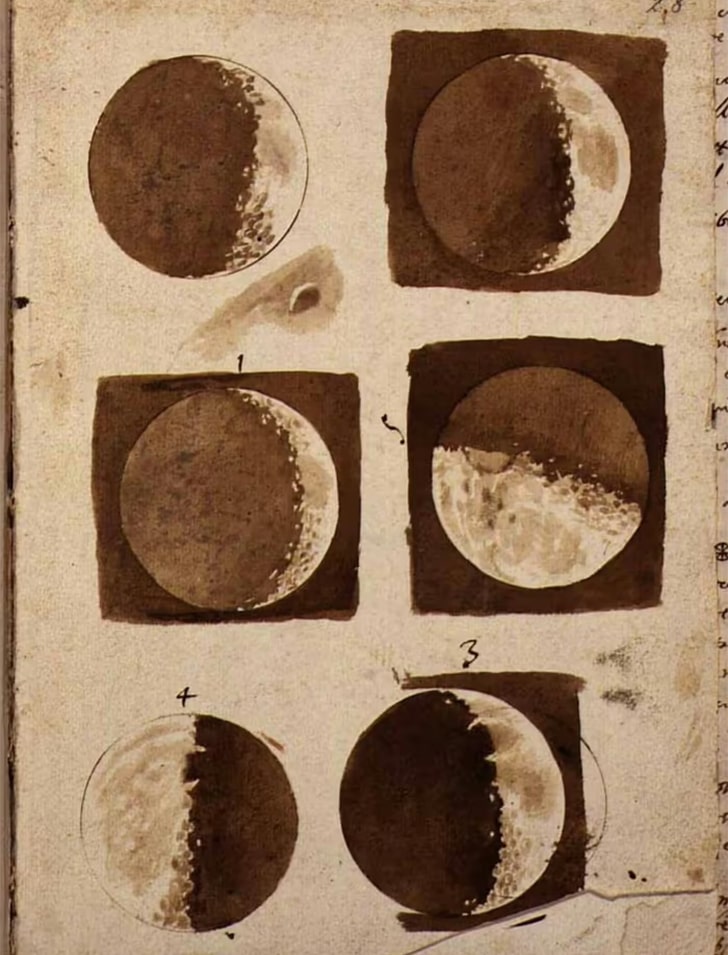
Galileo’s revolutionary sketches showcased a celestial body strikingly similar to Earth’s terrain, dotted with shadows and bright peaks that changed with the light. His observations cracked open the door to modern astronomy, proving that the heavens were not the unblemished realm of the gods but a place of rock and dust, waiting to be explored.
Name Anything Hotter!
The Sun, a colossal nuclear furnace at the heart of our solar system, burns at a blistering 10,000 degrees Fahrenheit on its surface, and millions of degrees at its core. Contrary to the common yellow depiction, its true color is a white-hot glow, distorted to our eyes by Earth’s atmosphere.
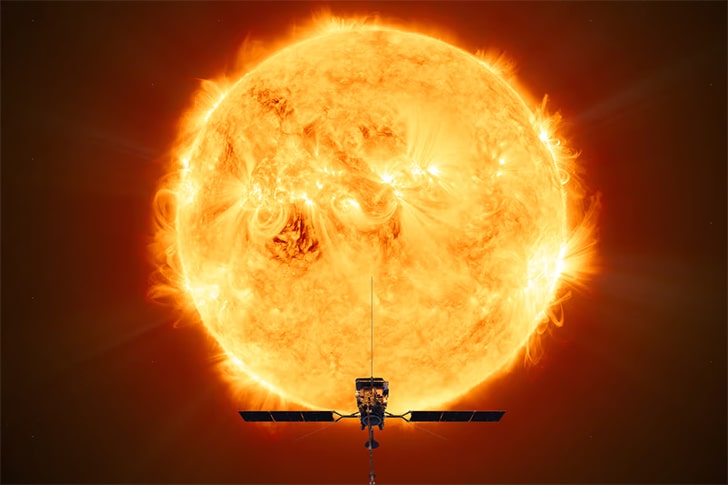
It’s the ultimate life-giver, bathing our planet in light and warmth, driving the weather, and fueling photosynthesis in plants, the foundational process for life on Earth. Without the Sun’s energy, our world would be a lifeless ball of ice, drifting darkly in the void of space.
Dilating Time and Traveling Through Space
Time doesn’t tick the same for everyone, everywhere. It’s a wild concept, but in space, astronauts like those on the International Space Station age a smidge slower than folks on Earth. It’s due to a mind-bending idea called time dilation, rooted in Einstein’s theories of relativity.

Speed and gravity are the time-bending culprits here. Move fast or get near something super heavy, like a black hole, and time starts dragging its feet for you compared to someone chilling on Earth. So, in space, your watch could lazily count seconds while Earth clocks race ahead.
Venus On The Move
When Venus sails across the Sun’s blazing face, we witness a rare celestial event from Earth known as a transit of Venus. It’s a special migration only Venus and Mercury can star in because their orbits overlap the Earth’s own path around the Sun.
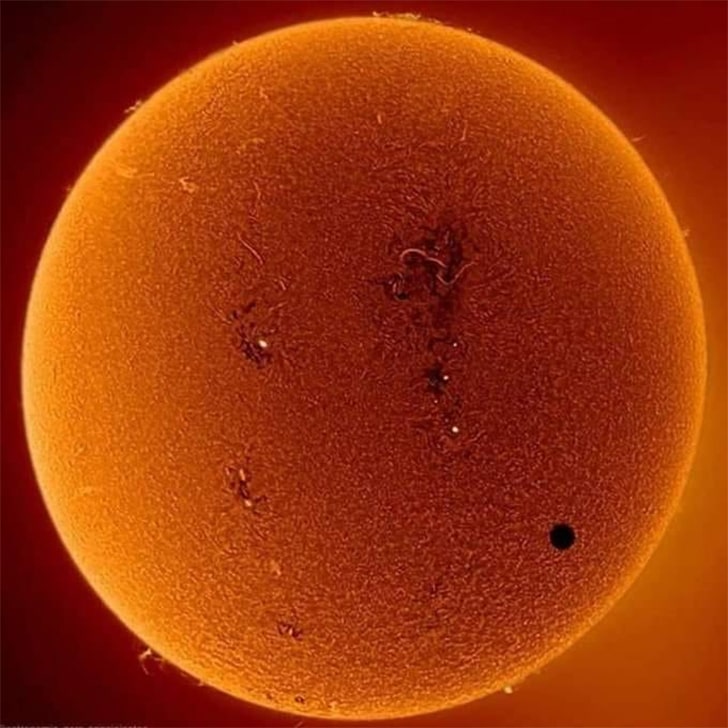
During the transit, Venus appears as a tiny black dot gliding over the Sun’s brightness. These crossings come in pairs, eight years apart, but then they take a lengthy break — either 105.5 or 121.5 years. It’s a dance of the planets, a slow-tempo waltz that space enthusiasts mark their calendars for.
Here’s Looking At You, Mercury
Mercury, the solar system’s swift messenger, lies closest to the Sun; it zips around our star every 88 Earth days. The MESSENGER spacecraft unveiled its surface, a moon-like tableau scarred by craters, with the massive Caloris Basin standing out, a remnant of a titanic cosmic impact.
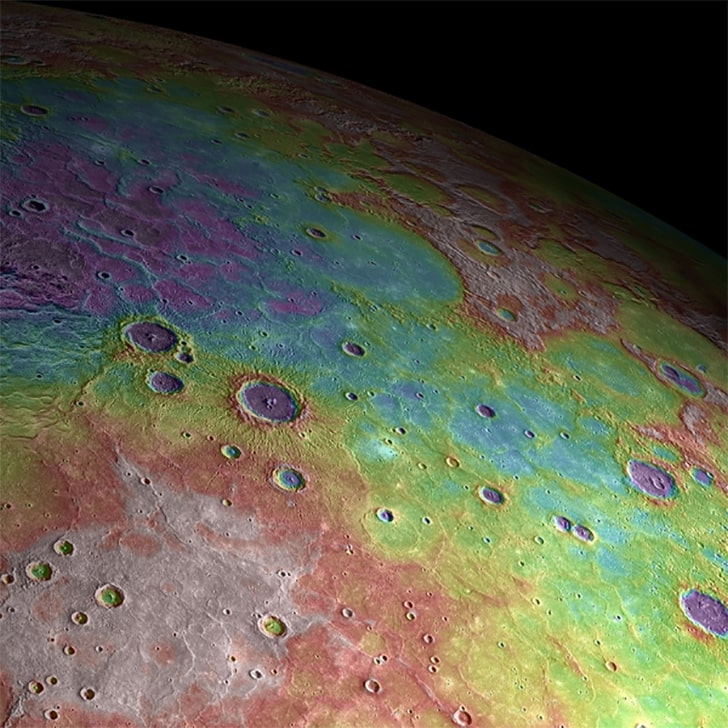
This tiny planet’s dayside sizzles at 800 degrees Fahrenheit, while its night freezes at minus 290, lacking an atmosphere to hold in the heat. The photos show a barren, rocky landscape, showing signs of a violent past and offering a glimpse into the early chapters of our solar neighborhood’s history.
What Goes Up, Must Come Down
Space Launch Complex 40 at Cape Canaveral Air Force Station has etched its place in spaceflight history, famously launching SpaceX Falcon 9 rockets. Captured in an iconic image, a Falcon 9’s ascent is a column of fire against the night, while its descent, just nine minutes later, is a serene arc of light on the right.
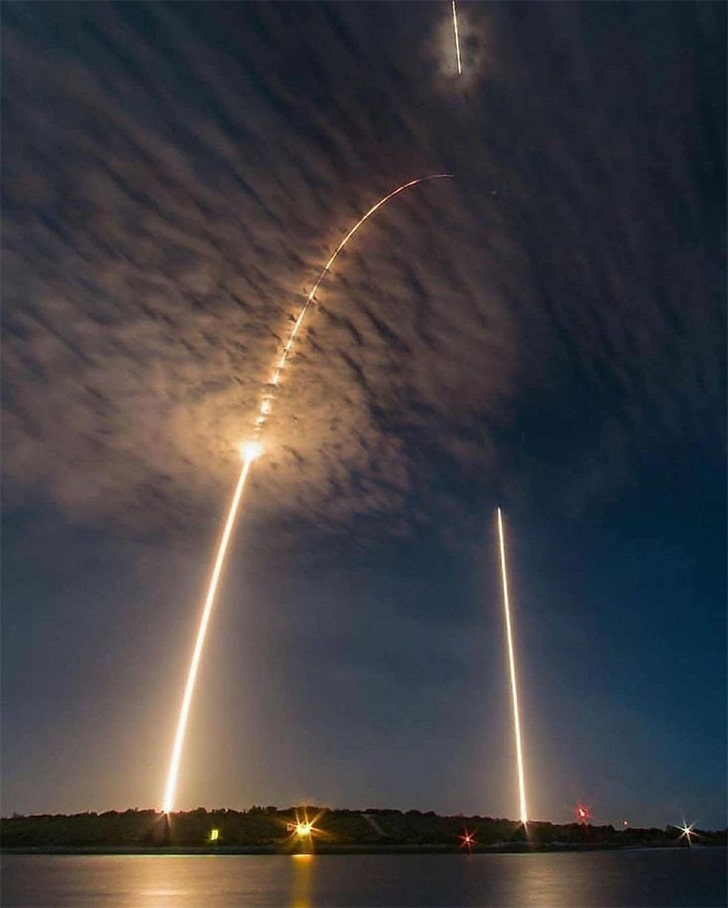
This dual imagery shows the rocket’s balletic round trip—a testament to SpaceX’s reusable rocket technology. The brilliance of the rocket’s engines on lift-off contrasts with the delicate precision of its controlled landing, a show of power and finesse.
100,000 Times Around The Earth
The International Space Station (ISS) is a testament to space-faring global cooperation. The USA (NASA), Russia (Roscosmos), Europe (ESA), Japan (JAXA), and Canada (CSA) all pooled their ambitions to create this orbiting laboratory.

Traveling at a blistering 17,500 miles per hour, the ISS completes an Earth orbit roughly every 90 minutes. Imagine sipping your coffee while witnessing 16 sunrises and sunsets every day! Since its inception in 1998, it has made over 100,000 orbits, each a cosmic lap around our blue marble, a symbol of unity and human ingenuity against the vast backdrop of space.
The Quintessential Hourglass Figure
The Southern Crab Nebula, with its celestial hourglass shape, is a cosmic spectacle caught in the gaze of the Hubble Space Telescope. Two decades after its initial snapshot, Hubble revisited this astonishing nebula, revealing the intricate dance of stellar winds sculpting dust and gas into this ethereal timepiece.
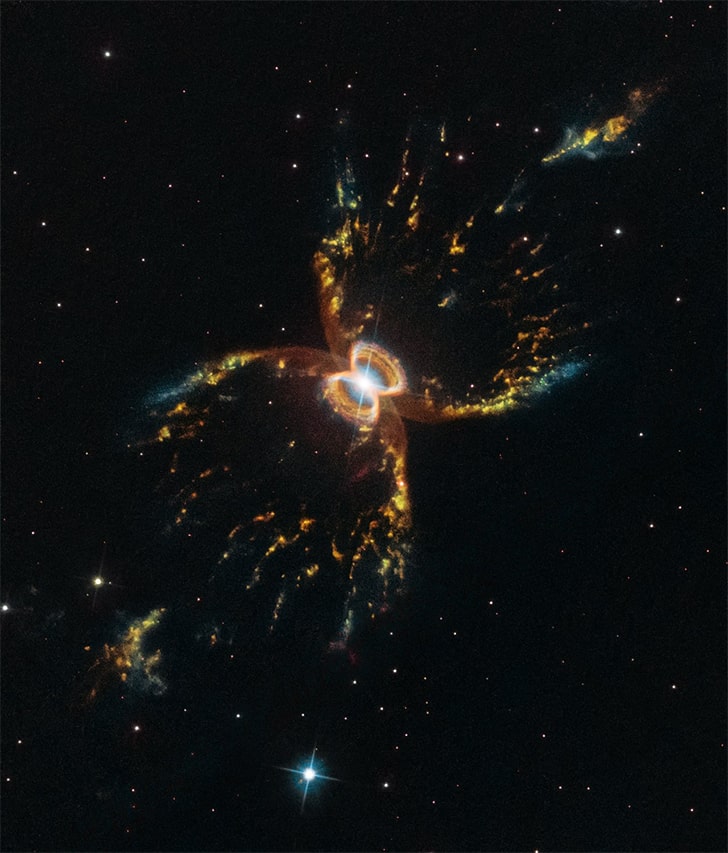
This remarkable image celebrates the nebula’s intricate structure, showing the symphony of cosmic forces at play. The vibrant colors and dynamic patterns observed in this newer image provide a stunning comparison to its earlier portrait, highlighting the nebula’s evolution and the enduring legacy of Hubble’s eye on the sky.
Matching Wavelengths and Vibes
Quantum physics invites us into the atom’s heart, where matter dissolves into shadowy dances of energy. Peering into this subatomic realm, we find no solid structures, just the whirl of energy waves—nature’s unseen choreography.

An atom is less like a solid ball and more akin to a tiny, forceful storm, its essence a pulsating electric field that echoes through space. It’s a place where reality flickers with ghostly vibrations, a reminder that at the universe’s foundation lies not solidity, but an endless dance of energetic waves.
What’s At The End Of The Wormhole
Imagine a shortcut through space, a cosmic tunnel connecting two distant spots like a bridge across the universe. That’s what scientists call a wormhole. Picture folding a piece of paper with two dots on opposite ends, then poking a pencil through, bringing the dots together.
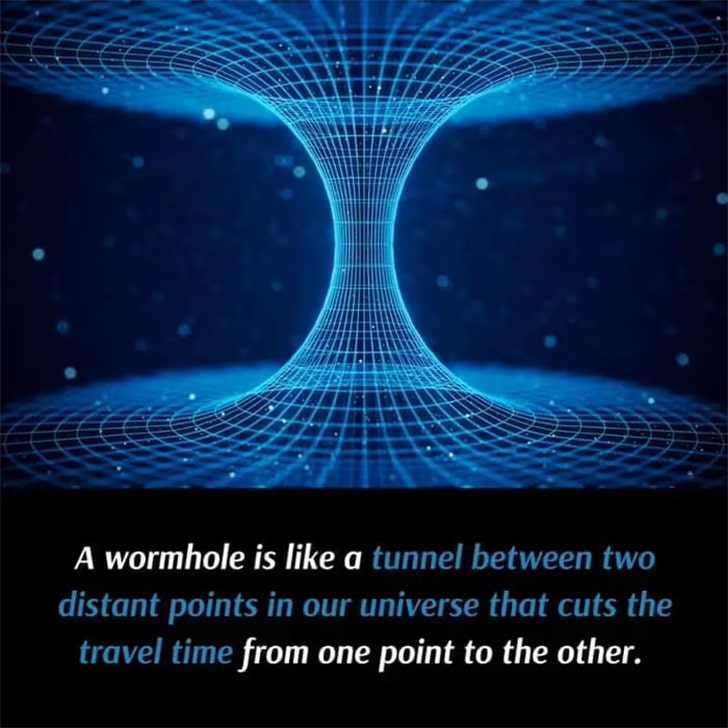
Wormholes are like that pencil, bending space for a quick trip between far-off places. While we haven’t found real wormholes, physics suggests they could exist, woven into the universe’s fabric. They spring from Einstein’s theories, a mind-bending blend of gravity and space-time twists—a space adventurer’s dream of hopping galaxies in a single bound!
The Scary Eye Of The Storm
From the quiet of space, an astronaut aboard the International Space Station captures the immense power of a typhoon. The photo reveals the storm’s eye, a deceptive calm center surrounded by a fury of swirling clouds. This colossal spiral stretches for miles, its arms reaching out over the ocean.
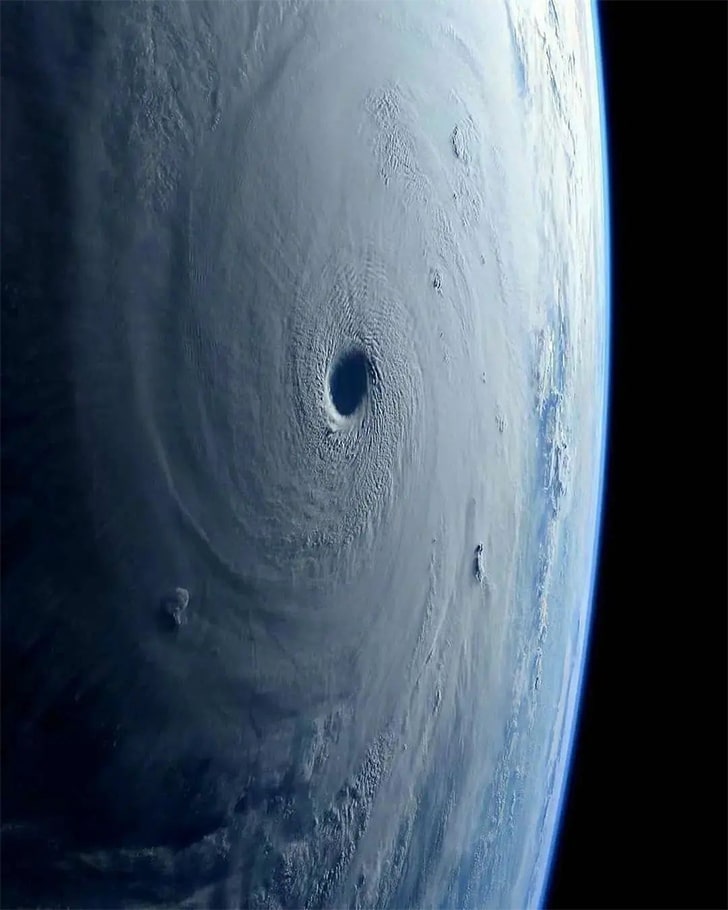
Viewed from above, it’s both beautiful and terrifying, a reminder of nature’s vastness. The image, a snapshot of Earth’s raw energy, shows the typhoon’s scale, dwarfing cities and landscapes under its immense shadow, a testament to the powerful forces that our blue planet harbors within its atmosphere.
Speaking Of The End Of The World…
Scientists have some pretty wild ideas about how the universe might end. One theory is the “Big Rip,” where the universe pulls itself apart until galaxies, stars, and even atoms are shredded. Then there’s the “Big Freeze,” a slow chill where stars flicker out, and the universe goes dark and cold.
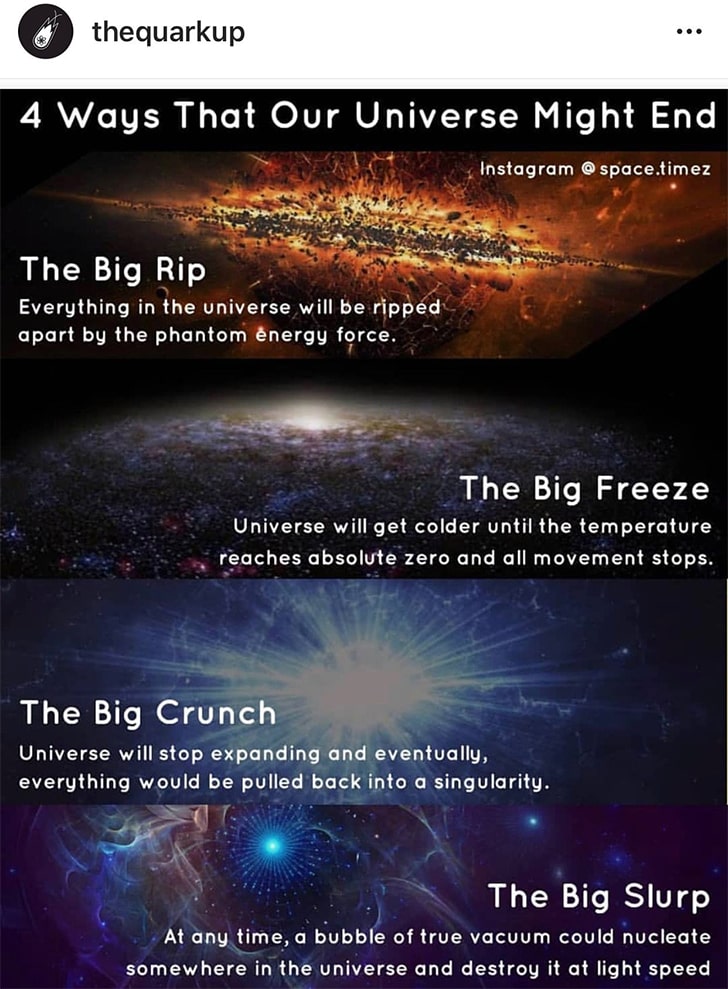
The “Big Crunch” is like the universe taking a huge, reverse breath, collapsing back into a hot, dense state. And the “Big Slurp?” That’s if a quantum bubble forms at a point in the universe, expanding at the speed of light, changing the laws of physics inside it—gulp!
All That The Eye Can See
From space, the Nile River is a striking sight, a vibrant thread woven across the vast tapestry of the Earth’s landscape. Astronauts often describe it as a life-giving ribbon that stands out against the surrounding desert, a beacon even in the silent expanse of space.
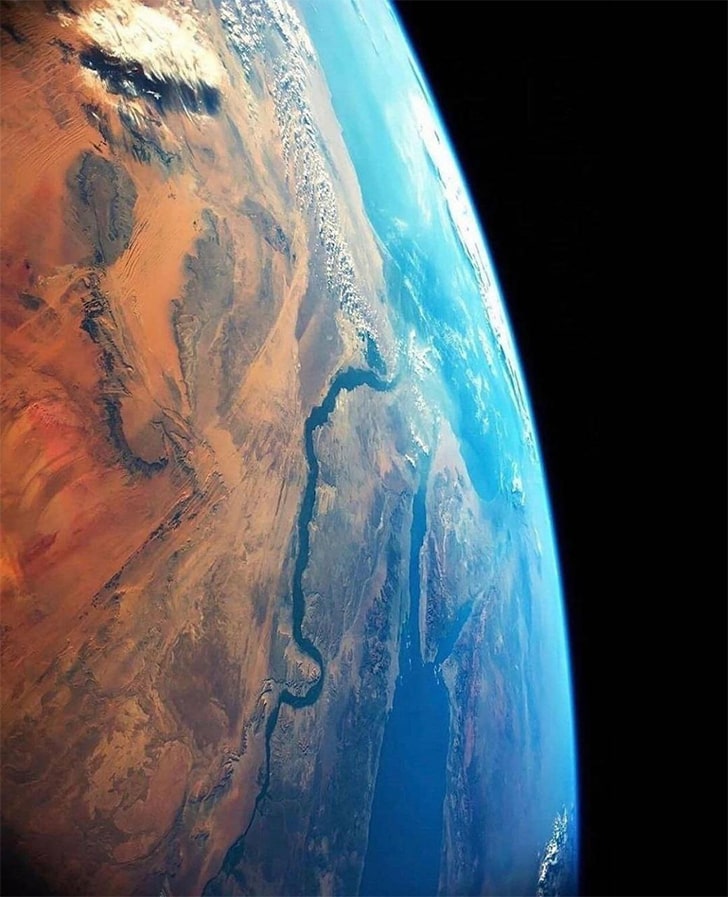
They’re mesmerized by how it snakes through the darkness during nighttime passes, illuminated by the glow of clustered city lights. The river serves as a geographical marker from orbit, a clear and magnificent sight that highlights the impressive scale and natural beauty of our planet’s longest river.
Scary And Astounding At The Same Time
Come meet SMBH (2157), a true cosmic giant, the fastest-growing black hole and largest quasar we know. Imagine something 34 billion times heavier than our Sun—that’s SMBH (2157)! It’s an enormous space monster gobbling up material and planets at an astonishing rate.
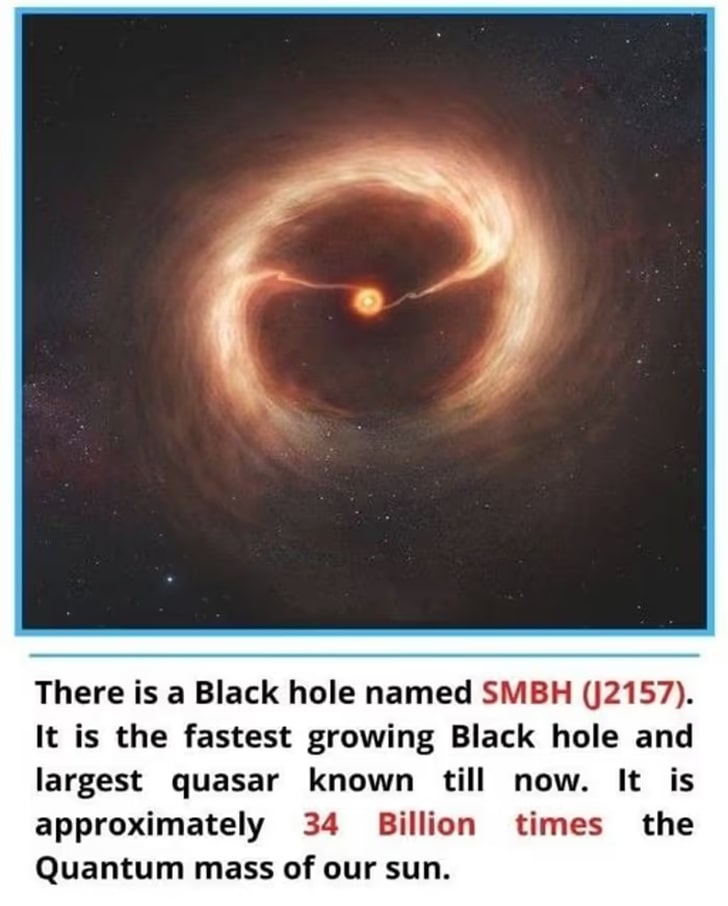
This black hole is so far away, a staggering seven billion light-years, that we’re seeing it as it was when the universe was younger. It’s a glimpse into the past and a reminder of the universe’s vastness and the mighty forces at play within it, forces that can outshine entire galaxies as they feed and grow.
Drop It Low!
Imagine gliding through alien skies like a bird—this dream could be a reality on Saturn’s moon, Titan. Titan’s low gravity and dense atmosphere mean strapping wings to your arms could have you soaring! It’s a place where human-powered flight isn’t just fantasy.
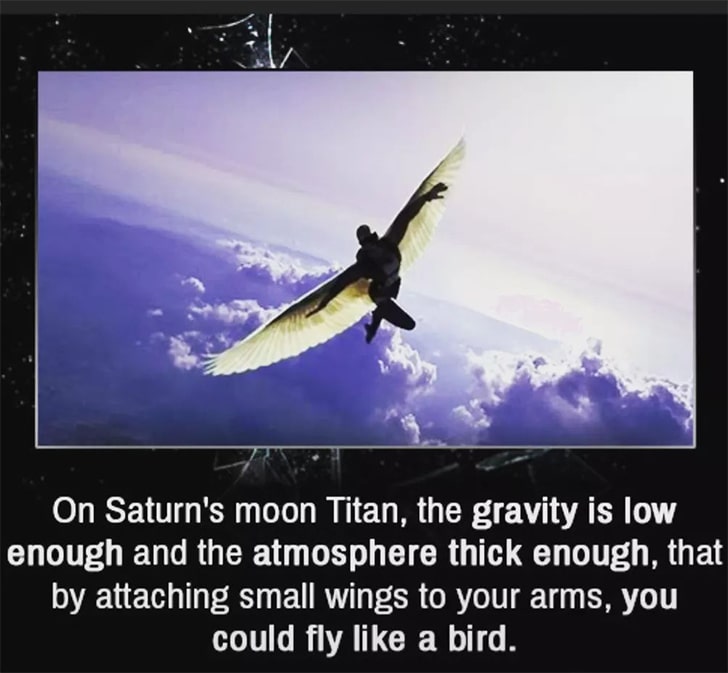
Unfortunately, Titan stands alone in this unique feature within our solar system; no other planet or moon offers the right conditions. Elsewhere, either the air’s too thin, like on Mars, or gravity’s too strong. Titan invites us to dream of floating above its mysterious surface, beneath the glow of the distant Sun, in a way we can’t anywhere else.
Hexa-Gone With The Wind
Saturn dances to its own cosmic beat with a stunning feature: a hexagon-shaped jet stream crowning its north pole. This celestial six-sided wonder, larger than Earth itself, has baffled scientists since its discovery by the Voyager spacecraft in the 1980s.
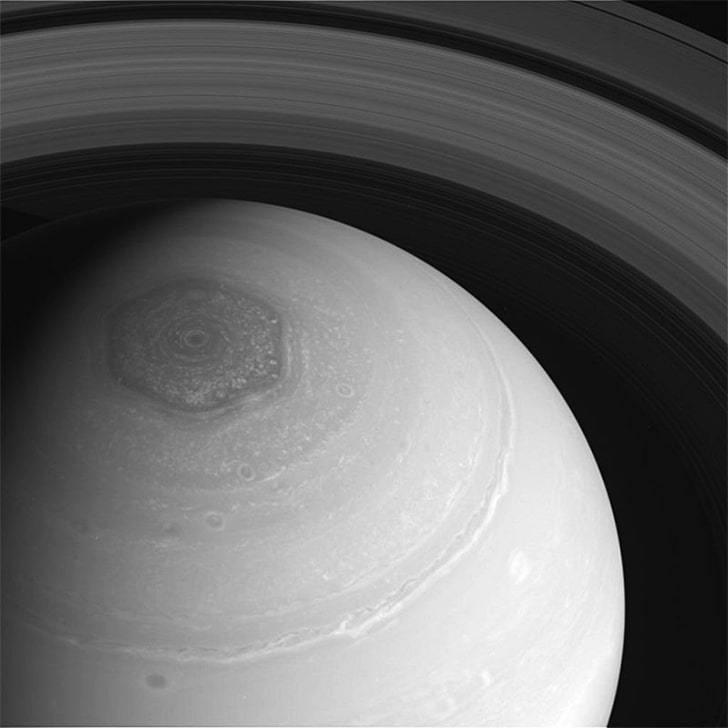
Created by high-speed winds whirling at 200 miles per hour, the hexagon remains oddly stable in Saturn’s swirling atmosphere. It’s a natural spectacle that cannot be found on any other planet, a puzzle set against the backdrop of Saturn’s majestic rings. The hexagon, with its honeycomb-like allure, is a unique signature of this gas giant.
The Prettiest Of Them All?
The supernova remnant, the “Spaghetti Nebula” or Simeis 147, is a celestial entity born from the explosive demise of a massive star. It’s an intricate lacework of gas filaments sprawling across 150 light-years, tangled in the constellations of Taurus and Auriga.

Glowing faintly in the night sky, its eerie beauty took about 40,000 years to reach us. Observing it is like gazing back in time, to an event where a star’s death throes spewed out the elements that make up planets and even people! This is a reminder of the universe’s cycle of death and rebirth.
An Icy Swim, Anyone?
Mars is a planet pockmarked with craters, but Korolev crater stands out with its year-round ice rink. At roughly 50 miles wide, it’s like a giant chilly bowl with a layer of ice 1.1 miles thick. This icy wonder is kept frozen by a phenomenon called a “cold trap.”
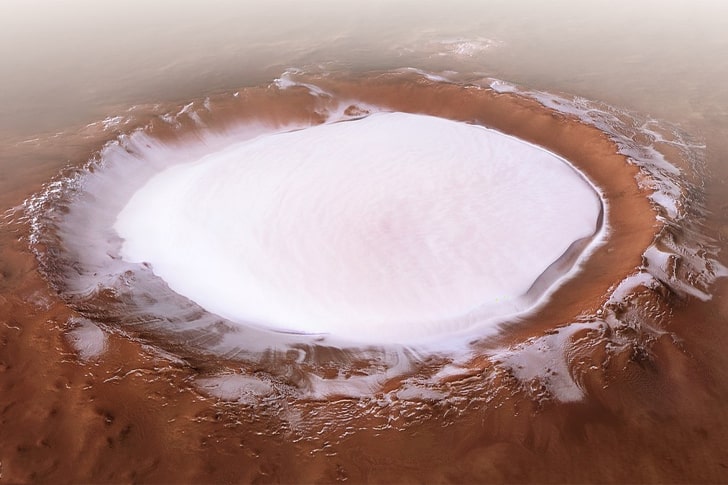
The ice cools the air directly above it, and since cold air sinks, this chilly blanket stays put, preserving the ice from the Martian atmosphere. It’s a frosty oasis in the barren, rocky landscape, showcasing Mars’s capability to hold water and secrets from the planet’s past.
Everything Hangs By A Fine Balance
Scientists have given us a rather scary heads-up: a passing star could disrupt our solar system. It sounds like a scene from a sci-fi movie, but it’s based on real concerns. Even a tiny nudge to Neptune’s orbit—just 0.1%—by a star cruising past could set off a gravitational domino effect.

This could throw our neatly ordered solar system into chaos. Such an event would be rare, but space is a vast highway where stars pass regularly, reminding us that our neighborhood is dynamic and ever-changing. Our planetary stability, it seems, might be more delicate than we once believed.
Is It A Bird? Is It A Plane? Oh, It’s Just Leonard!
Comet Leonard, discovered by astronomer Gregory J. Leonard on January 3, 2021, is a cosmic snowball with a twist. It’s unique because it’s one of the few comets visible to the eye this century, giving skywatchers a celestial treat.
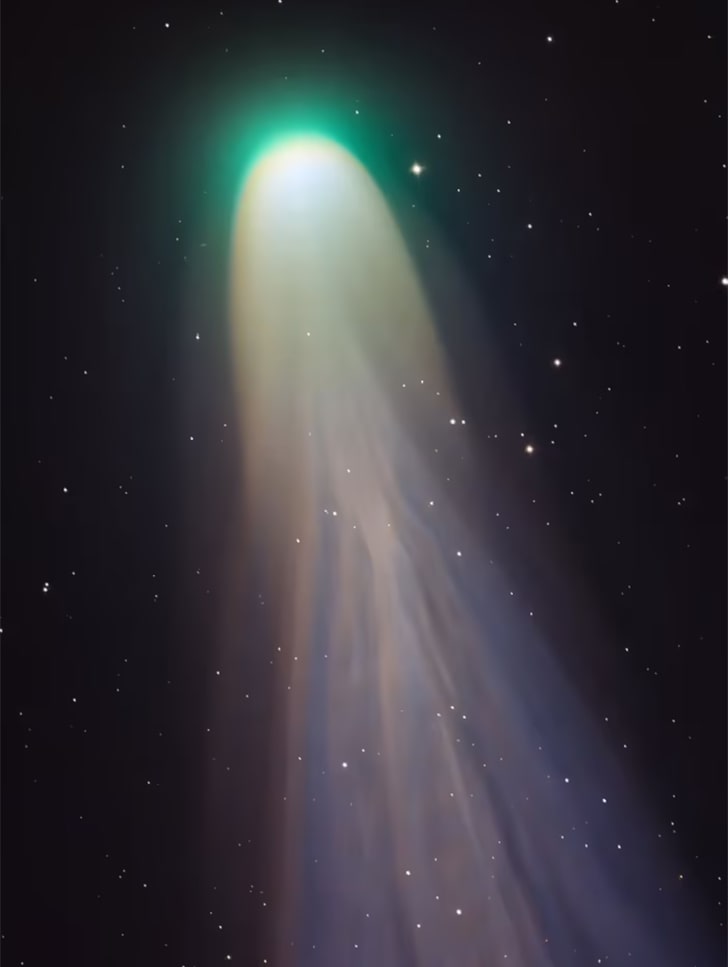
What’s more, Comet Leonard swept past Earth on its sunward plunge, a close encounter of the space kind, before heading out of the solar system, never to return. Its bright tail, made of dust and gas, lit up the pre-dawn skies, creating a spectacular show for those lucky enough to glimpse this fleeting visitor.
A Psychedelic Space Dream
In the vast canvas of space, nebulas bloom like colorful flowers, their gaseous petals swirling in the darkness. These colossal clouds are both graveyards and cradles: remnants of stellar explosions and nurseries where newborn stars ignite from cosmic dust.
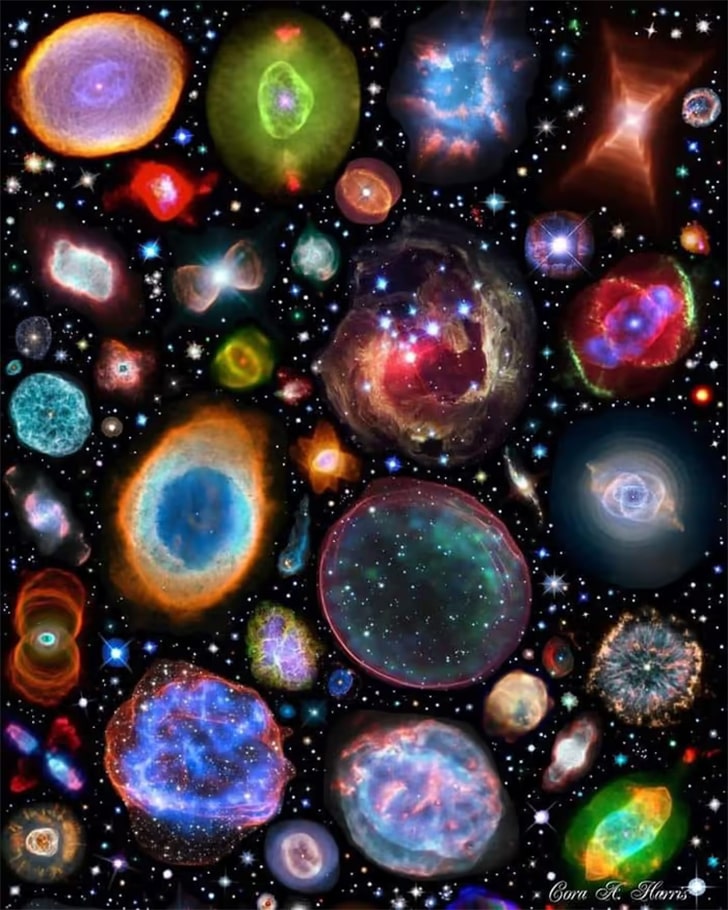
Gazing upon them, we behold the intricate dance of creation and destruction that etches the universe’s beauty across the night sky. This image captures that display—a mosaic of nebulas, supernovas, and stars—revealing the wondrous complexity and artistry sculpted not by human hands, but by the forces of nature in the celestial realm.
Right Sphere, Right Now
The globe lies to us, as the Earth isn’t a perfect sphere; it’s more like a squashed ball. This unique shape is called an “oblate spheroid.” The spinning of Earth on its axis causes it to bulge slightly at the equator due to centrifugal force.

Imagine spinning a pizza dough; it stretches out at the sides while the top and bottom flatten. That’s Earth—a plump middle with flatter poles! This subtle stretching makes the equator about 26 miles thicker than the polar regions, crafting a planet that’s beautifully imperfect, just like the myriad of life forms it cradles.
Down To The Bare Elements
Our Earth is a masterful composition of elements, dominated by iron, oxygen, silicon, and magnesium. Iron, the core’s heavy anchor, nestles deep within, surrounded by a silicate mantle where magnesium also dwells, both giving Earth its solid stance.

Oxygen, the breath of life, mingles throughout, from the core to the crust, binding with silicon to craft the sandy beaches and mountainous silhouettes. Together, these elements are the silent architects of our world’s stunning landscapes, the deep oceans, and the air we breathe—unseen, yet ever-present, in every corner of our planet.
Our Watches Lie To Us!
A day on Earth is a tease of exactness; not quite the neat 24 hours we mark on our clocks. In truth, Earth takes about 23 hours, 56 minutes, and 4 seconds to pirouette once on its axis, also called a sidereal day.
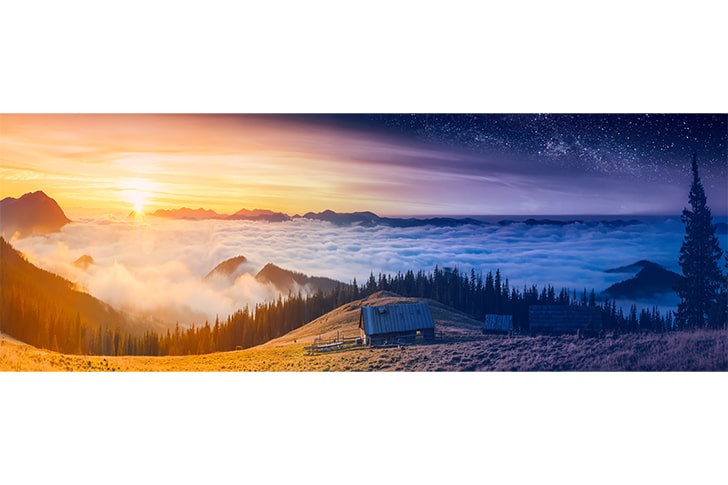
Over eons, the Earth’s twirl is gradually winding down, its spin minutely slowing due to the gravitational dance with the Moon. It’s a lingering speed, extending our days over millennia, hinting at a distant future where days will stretch longer under the steady gaze of the sun.
So, Everything We Know Is A Lie?
A calendar year skims the surface of time, marking 365 days, but Earth’s orbit tells a longer tale. It actually takes about 365.25 days for our world to complete its elliptical loop around the Sun. This extra quarter of a day accumulates, stealthily, until every four years, it becomes a full day.

Hence, the leap year is born, a day added to February’s end to keep our calendars in harmony with Earth’s celestial rhythm. Without this quirk, seasons would drift, and calendars would slowly spiral into disarray, detaching from the astral waltz they aim to mirror.
Nothing, No One Out There?
Earth is our oasis of life in the vast expanse of space, a unique sphere where life teems in abundance. While other planets and moons hoard water and organic compounds—the cosmic legos of life—the spark of life remains Earth’s secret.
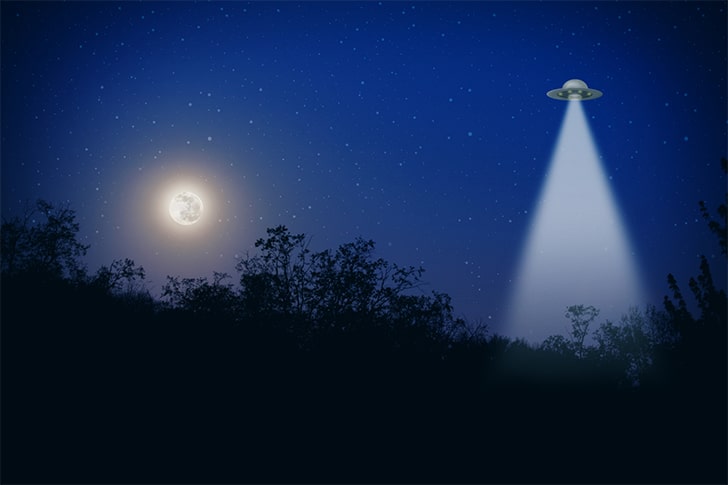
This special mix of liquid oceans, a breathable atmosphere, and a protective magnetic field creates the perfect cocktail for life as we know it. Despite searching the stars and finding hints of habitability, scientists have yet to encounter alien lifeforms, leaving Earth as the singular known cradle of organisms that call it home.
Gravity Doesn’t Hit The Same
Gravity, the force that pulls us to Earth, isn’t uniform everywhere on our planet. It’s slightly stronger in places with more mass underground, like mountain ranges, and weaker in areas that are less dense, such as ocean surfaces.

Intriguingly, gravity is a bit higher in the icy terrain of the Arctic and lower at the equator due to Earth’s slight bulge. So, if you weigh yourself at the poles and then at the equator, you might find a small but real difference on the scale—thanks to our planet’s complex gravitational landscape.
An Homage To Earth
Our home, Earth, has given its name to an entire class of planets known as ‘terrestrial’, derived from ‘Terra,’ the Latin word for Earth. These planets, including neighbors Mercury, Venus, and Mars, are rocky realms, built primarily from silicate rocks and metals.

These solid surfaces contrast with the gas giants in our celestial neighborhood, offering a hint that, perhaps, among the stars, there are more worlds like our own—rocky, sturdy, and whispering the possibility of life. It’s a tribute to Earth, a planetary namesake etched in the vastness of space.
Ice, Ice, Baby!
Most of Earth’s freshwater is locked away as ice. This frigid treasure trove is mostly tucked into the grand glaciers and ice sheets that drape over Greenland and Antarctica, vast and white. These ice-bound reservoirs hold water so ancient, it fell as snow long before human history began.
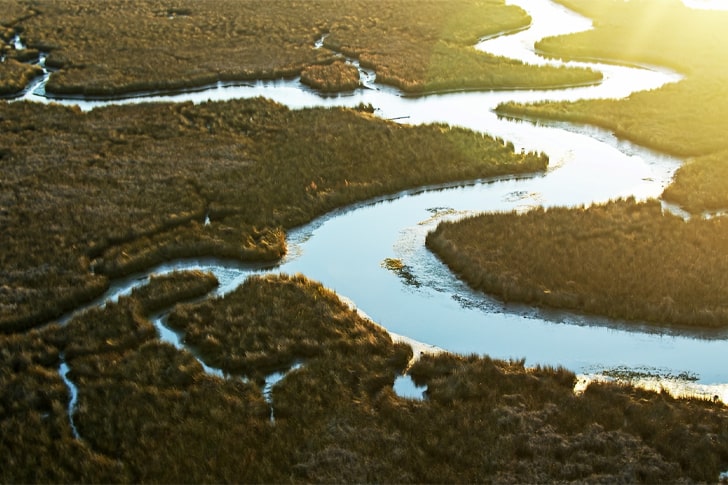
While serene in their frozen state, they’re vital to our survival, storing precious liquid that sustains rivers and ecosystems when it melts. This is nature’s balance, where even ice has a crucial role in the life-giving cycles of our planet.
Can You Spot Three Moons Tonight?
Earth’s got celestial companions beyond the moon we know! Asteroids 3753 Cruithne and 2002 AA29 follow unique paths that weave in and out of Earth’s orbit. They’re not true satellites, but their dance with Earth makes them look like they’re tagging along.
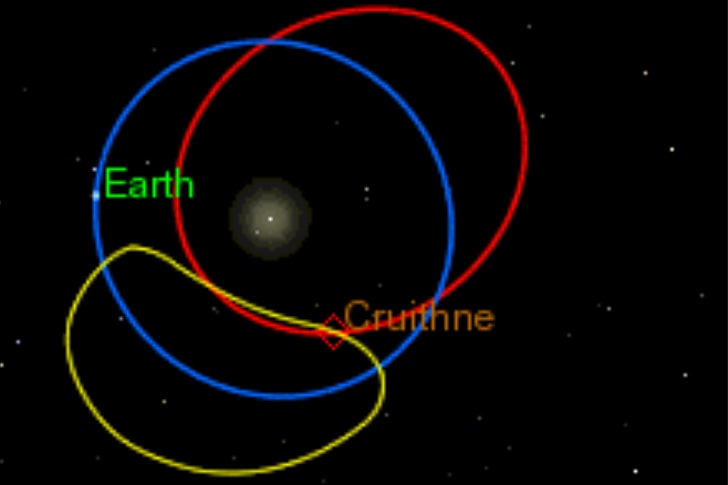
These cosmic wanderers sidle up to us occasionally, with 3753 Cruithne cozying up to just 3.9 million miles away every 95 years. It’s a game of tag, where Earth’s gravity tugs at these asteroids, influencing their journey around the Sun and bringing them into our neighborhood, in a dynamic dance of our solar system.
The Earth Likes To “Move It, Move It”
Beneath our feet, Earth’s crust is a puzzle of tectonic plates in constant, slow motion. It’s like a game of bumper cars on an international geological scale. These plates shift, collide, and slide past one another at about the same speed our fingernails grow.
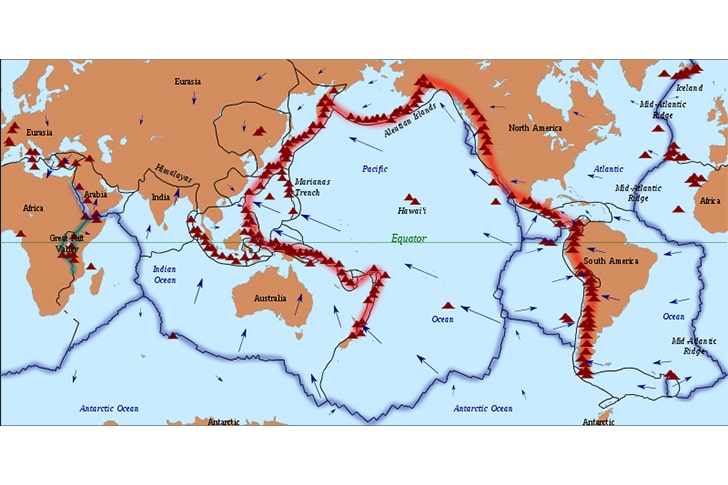
Their movement can create mighty mountains, spawn new land, or unleash powerful earthquakes and volcanic eruptions. This movement is driven by the churning heat deep within Earth’s core, showing that our planet is a dynamic living system, ever-changing and evolving over millions of years.
Jolting All Day Long
Every minute, about a hundred lightning bolts electrify Earth’s atmosphere, illuminating skies with spectacular energy displays. The saying “lightning never strikes the same place twice” is a myth, as lightning favors no spot over another.
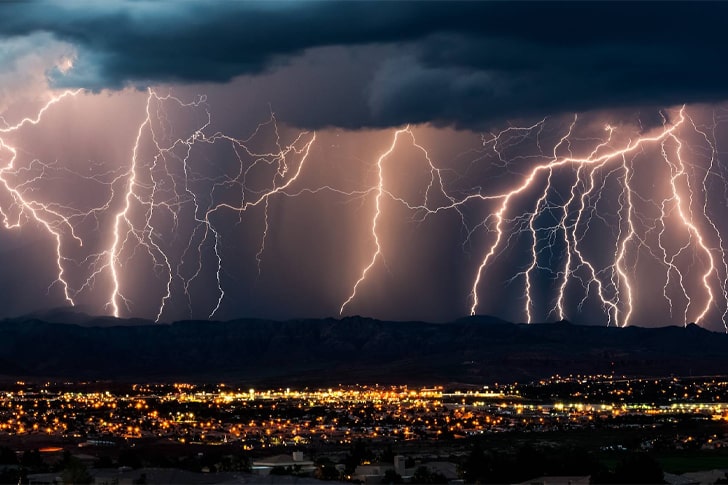
The Empire State Building is struck around 25 times a year. When lightning unleashes its electric might, it can reach temperatures of approximately 30,000 Kelvin, hotter than the sun’s surface. These fiery flashes are nature’s way of balancing the electrical charge between Earth and storm clouds, a dazzling reminder of our planet’s untamed power.
The Largest Living Organism Isn’t What You Think It Is
Admit it, you thought it was the blue whale, isn’t it? However, the Earth’s largest living organism is the Armillaria ostoyae, commonly known as the honey fungus. The most massive and oldest known specimen is located in the Malheur National Forest in Oregon.
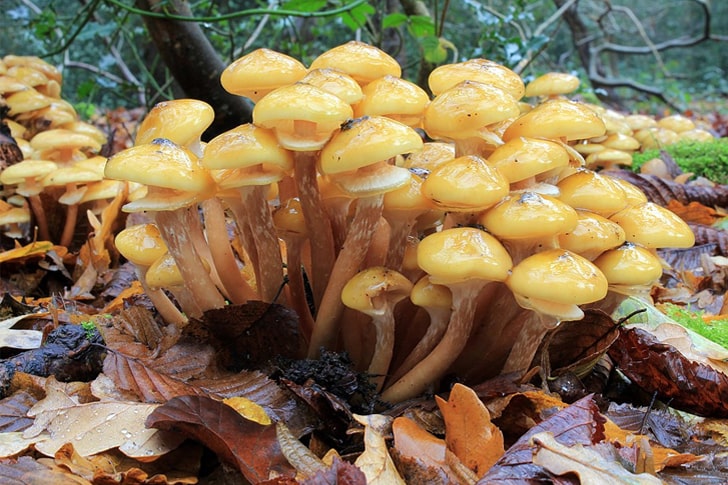
This colossal fungus spreads over approximately 2,385 acres, which is roughly 3.7 square miles. It is a network of underground mycelium that can be thousands of years old, though the mushrooms that appear above ground are seasonal and much younger. This organism showcases the incredible, often unseen, scale of life on our planet.
The Universe Is Pulling Them Apart, Literally!
The Moon is slowly drifting away from Earth, about 1.5 inches per year, a discovery made possible by laser beams aimed at mirrors left by Apollo missions. This gradual distancing is due to tidal forces between Earth and the Moon.
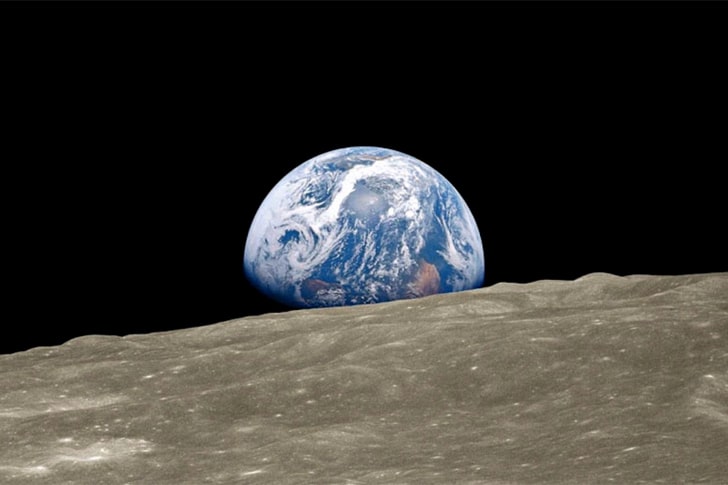
But fear not, the Moon won’t escape Earth’s grasp within our lifetimes. In fact, it will take billions of years before it could potentially reach a point called the “Hill sphere,” beyond which it would no longer be bound by Earth’s gravity. For now, our Moon remains a steadfast companion in the sky, albeit an ever so slightly more distant one each year.
This Is Tilt-ilating News
Here’s something amazing: the Earth’s tilt, known as obliquity, varies between 22.1 and 24.5 degrees over a 41,000-year cycle. This tilt is critical as it dictates the severity of seasons; a greater tilt means more extreme seasonal changes, with hotter summers and colder winters.
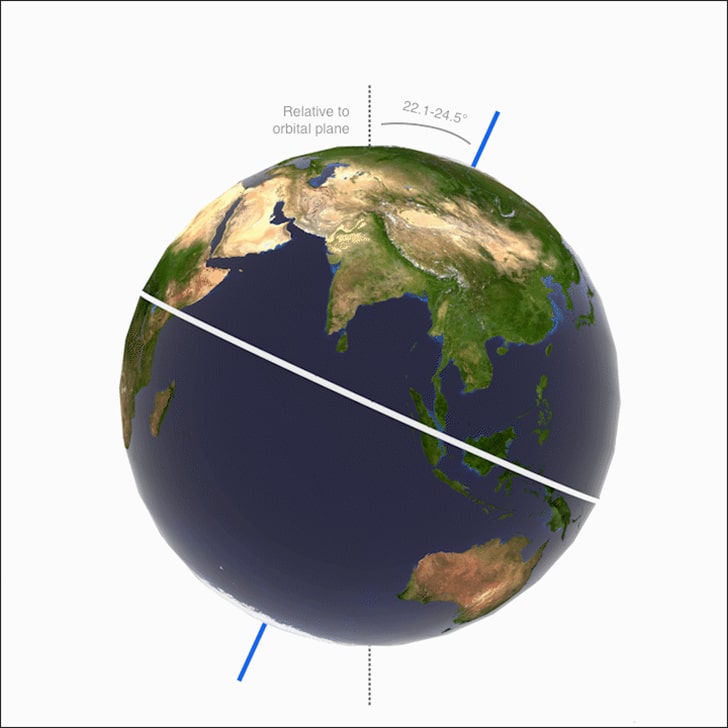
Conversely, a lesser tilt brings milder seasons. Currently, Earth is mid-cycle, with a tilt of about 23.5 degrees, giving us our familiar seasonal rhythm. As Earth’s tilt ebbs and flows, it subtly reshapes climates and can influence ecological and weather patterns, showing just how interconnected our planet is with its position.
Never Let Them Guess Your Next Move
Earth’s orbit around the sun isn’t a perfect circle but an ellipse that stretches and shrinks over 100,000-year cycles, a phenomenon called eccentricity. Gravitational tugs from nearby planets, mainly Jupiter and Saturn, cause this fluctuation.
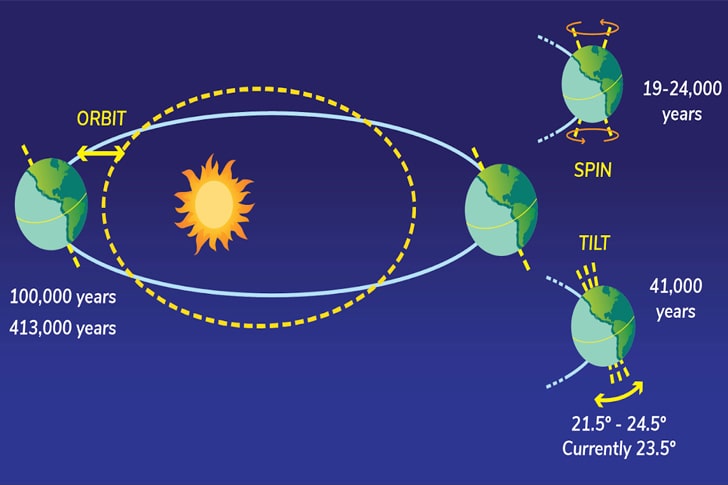
When Earth’s path is more elongated, we experience greater differences between perihelion, our closest approach to the sun, and aphelion, our farthest point. This can lead to slight variations in seasonal extremes and global climate. Currently, Earth’s orbit is nearly circular, contributing to the relatively mild seasonal changes we enjoy.

You must be logged in to post a comment Login